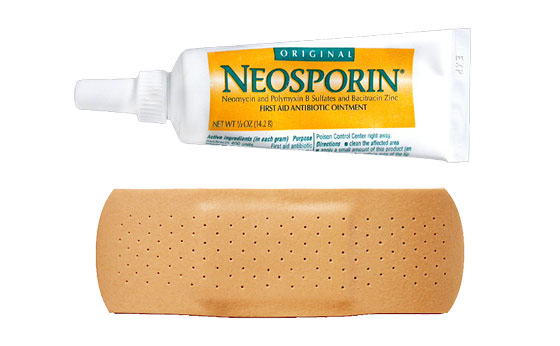How To Stop An Infection From An Ordinary Cut

It doesn’t take long for the possibility of an infection setting in as a result from an ordinary cut on your skin. In today’s modern world of medicine we don’t give it much thought – especially with all of the ointments and antibiotics at our disposal.
But what about for preparedness? What supplies should we keep on hand to help prevent a simple (or worse) cut from becoming infected? Or to treat an infection that may be setting in?
How do you know if a cut is becoming infected?
I’m writing this as a result of a recent experience – actually two of them in the past few days. I have been doing more than my share of manual labor around the homestead lately and one day I cut my finger (very minor) while working with EMT (electrical conduit pipe). I pretty much ignored it, and by the next morning that little cut began to hurt – a bit of sting and it felt warm – plus it began to redden around the area. That’s how you know that an infection may be setting in.
Similarly, just yesterday I somehow managed to get a small cut on the back of my ankle while working outside (I should have been wearing my taller work boots). Again, I ignored it for awhile, but it became apparent (red color surrounding the area and becoming more painful) that I had better do something about it – just in case…
How To Stop The Infection
For most minor cuts, the remedy is simple.
1. Rinse the cut of any dirt. I simply rinse under running water for minor cuts. For deeper or worse cuts you might consider using hydrogen peroxide or saline to rinse the cut.
2. Apply an antibiotic ointment. This is the key! Again, we live in a modern medical world in which products like these can literally save our life. It works… The most common antibiotic cream is the brand name, NEOSPORIN.
The active ingredients of Neosporin (in each gram) are:
Bacitracin 500 Units
Neomycin 3.5 Mg
Polymyxin B 10,000 Units
Pramoxine Hcl 10 Mg
The shelf life of Neosporin (and presumably similar antibiotic ointments) is based on its expiration date. This is the date when it loses its efficacy (the ability to produce a desired or intended result), however the potency is not all gone – it diminishes. The typical shelf life from manufacture is 2 years.
3. Having applied antibiotic ointment, apply a band-aid. If the cut is worse than what a band-aid can cover, then apply clean gauze and tape it up…
You will usually find that once you’ve applied Neosporin (or similar), it doesn’t take long at all for any pain to diminish – along with any redness. This stuff really works…
I know that this is a simple thing (treating a cut) and most everyone knows about antibiotic ointment – but I’m pointing it out today so that you might check your First Aid supply to be sure you have enough, and to check the expiration dates.
Side note: Perhaps the best general purpose First Aid Kit (Made in the USA)
Antibiotics
Many of you who are preparedness-minded and have researched ways to acquire a personal storage of antibiotics – you likely have discovered the reality that so called ‘Fish Antibiotics’ (from Thomas Labs) are apparently the exact same thing.
Fish Mox – Amoxicillin
Fish Cillin – Ampicillin
Fish Flex – Cephalexin
Fish Flox – Ciprofloxacin
Fish Pen – Penicillin
Fish Doxy – Doxycycline
Related article:
Fish Antibiotics For Preparedness
Note: None of this is to be considered ‘medical advice’. Please consult with your doctor.
Feel free to add your own recommendations or experiences by commenting below:
